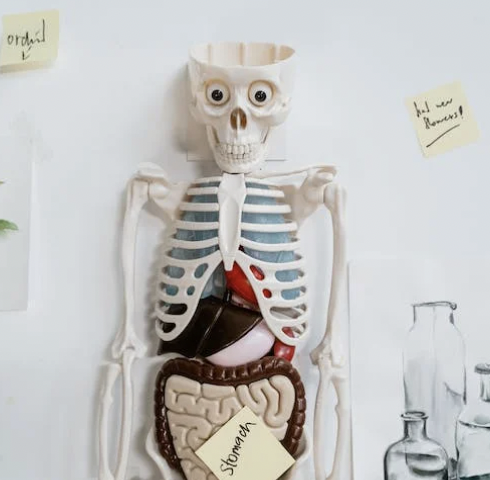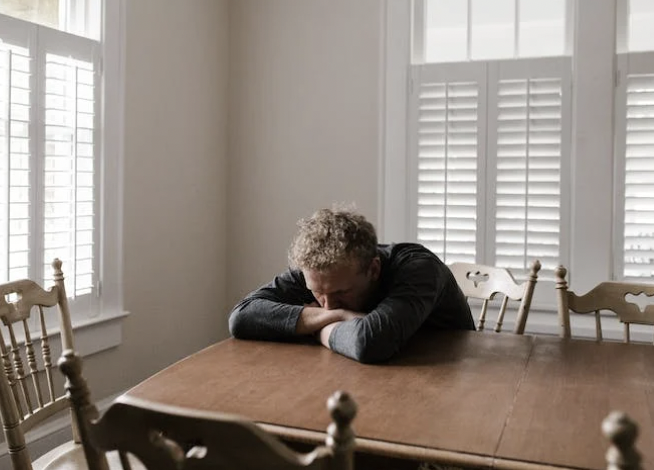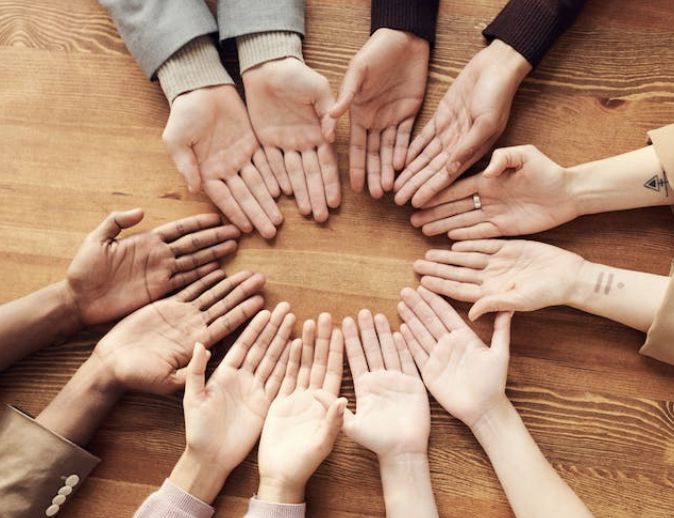
Living beyond Trauma the family system
How do you live beyond trauma? How do you get to the point where trauma symptoms stop running your life and just what does that look like? This next series of blogs entitled, “Living Beyond Trauma,” starts with challenges. Without acknowledging challenges, it is hard to know where to begin and how to continue without becoming discouraged. The first challenge is one of the most difficult—your family system.

How to cure insomnia
I really think I’ve cracked the code. After researching and applying new techniques to cure insomnia for the last few months, I am finally seeing real progress. That’s the good news. The bad news is, it takes time. Remember, I’ve had insomnia for nearly fifty years. Habits that have gone on that long aren’t going to change overnight. But they are changing and that is what matters. I wish I had found this information years ago. Like everything in my life, childhood trauma has an impact. The previous three insomnia blogs have been about the why and how insomnia is connected to childhood trauma. It is finally time to deal with ways to cure it.

Why trauma causes insomnia
I looked at my sleep therapist in irritation as she valiantly tried to be encouraging. “One goal with Cognitive Behavioral Therapy for Insomnia is for you to learn to catch the negative thoughts and change them before they can have an impact.”
That was all well and good, I thought, but just how do you change a negative thought? Do you repeat a positive mantra over and over? Do you simply tell yourself it isn’t true and ignore the sick feeling in your stomach? As I worked with my therapist using CBT-I I had become more aware of my negative thoughts about sleep, and I could catch them earlier on, but all that did was make me feel worse because I couldn’t change them. I still felt the same way. Taking away naps did not make a dent in falling asleep. In fact, I now felt so ill I didn’t know how much longer I could go on.

insomnia & hyperarousal
Hyperarousal is a primary symptom of CPTSD or Complex Post Traumatic Stress Disorder. One of a host of symptoms for long term childhood trauma survivors, hyperarousal is one of the top reasons for insomnia. And as I have been personally working on insomnia this summer, hyperarousal has gotten in the way. In a big way! Hyperarousal occurs when a person’s body suddenly kicks into high alert as a result of past trauma. Also known as fight, flight, freeze or fawn, it is an automatic response. Even though there may be no present danger, pathways laid down in the early years of life continue to operate. How do I explain this? Let me begin with a story from my own childhood.

Insomnia & Trauma
I am in the process of leaving behind my life as a vampire. Staying up all night, snoozing during the day. It’s hard becoming human. I’ve lived as a vampire so long, I hardly noticed it. But now, as I seek healing, I’m seeing just how difficult it is to change. For decades, I stayed up nearly all night until exhaustion forced me to pass out the next day. My brain interpreted the setting of the sun as a cue to churn. Sometimes I could last as long as 4AM. Other times I’d finally pass out around 2. Waking multiple times in the night, nightmares, panic attacks all added to the fun. During the day, if I got quiet at all or sat down to read or watch TV, I fell asleep. I lived in a permanent haze of jet lag.

i wish i could sing
So I’m driving down the road on the way to Wal-Mart for a pick up order. Avoiding the traffic out front, I drove around back and parked in spot #1. I pressed #1 on my iphone parking graphic and sat back to wait. Looking up, I noticed an odd bit of graffiti I had never seen before. Across from the parking lot was a train track lined by a chain link fence and across from that was a red brick wall. I had parked in this same spot a thousand times. There had never been any graffiti on that wall before. But there it was emblazoned in black spray paint.
“I wish I could sing.”

healing childhood trauma pt11
How do you find a healthy connection to the past? One reason childhood trauma is so difficult is the unique relationship we have with what has gone before. It is extremely complicated. Due to the nature of abuse, events become frozen in time, as if they are still happening in the present. Trying to make sense of what has happened is like picking through a knotted ball of yarn the size of a house.

Healing childhood trauma Pt1o
In this last section of the healing from childhood trauma series, today’s blog, along with the next two weeks, deals with the last stages of healing. We come to this after significant work had been done understanding, then making changes, interrupting old patterns of thinking and behavior. Support systems are in place. Significant spiritual and trauma body work have been done. It is then that we can find a healthy connection with the past instead of a broken one. It is then we can embark on a new life instead of constantly struggling to survive the old one.

healing childhood trauma pt9
Talking about spiritual things these days is nearly as hazardous as talking about politics. I know that those who read my blog come from a myriad of backgrounds and faith traditions including no tradition, so it is with a bit of caution, I approach this subject as I share a bit of my own spiritual journey.

healing childhood trauma pt8
Internal, external and spiritual are three shifts that need to occur along the journey of healing from childhood trauma. This week’s blog is about external change. Until you add an external change of action to internal belief, no amount of inner healing will translate into real transformation. Let me give you an example.

healing childhood trauma pt7
The third task of healing from childhood trauma addresses three shifts that must occur in order for the healing journey to come full circle; internal, external and spiritual. These are not linear but occur in layers. We finish with one then move on to the next, then come back around and do it all again. I don’t want to sound discouraging. You are not caught in a never ending loop. But, as survivors, part of what we need to accept is the depth of chronic childhood trauma. You can’t possibly process it all in one go. It is going to take time. It’s easier if you look at it in layers and not as a linear check list.

eat the cupcake icing first
There is great beauty to life. An Arizona sunset, the way a fantail grackle struts around searching for scraps. Pure white petunias, the smell of a citrus tree in Springtime. The fellowship of deep friendship, the unity of love. The swell of a symphony, and the colors in a painting. These and more are the things childhood sexual abuse and trauma take away.

healing childhood trauma pt6
It’s easy to talk about healing and lofty ideas like truth on the other side of pain, but when I remember what it was really like, the despair, the circular thoughts, the self-hatred, I remember how hard it was just to put one foot in front of the other. I lived in flashback all the time. All... the... time.

healing childhood trauma pt5
If you don’t know that pain is part of processing childhood trauma, you might think you are crazy or that healing is hopeless. Neither of those things are true. Processing the pain begins with breaking through denial discussed in the previous blog. This blog is about sadness and confusion.

healing childhood trauma pt4
The first task of healing childhood trauma is acceptance—accepting the fact of your abuse, accepting the meaning of those facts and lastly, accepting the irreversibility of the abuse. The first task occurs in the head—the second occurs in the heart. My family system was run like a cult so accepting the truth took a long time. It was like trying to untangle a gigantic ball of knots. As I read, researched and listened, the mess that was my family system began to come into focus. But that was only the first task of healing.

healing childhood trauma Pt3
Sitting alone in our family therapist’s office, I finally asked the burning question that had plagued me for so long. “Do you think my parents will ever change?” I held my breath. This was it. I had summoned enough courage to say the words out loud. It had been a long, slow slog through suffering taking more than a decade to come to a conclusion. The decade of distress, I called it. That season began with the phone call I received from my father. “Your mother isn’t doing well.” That was the understatement of the year. She was having a nervous breakdown.

healing childhood trauma pt2 meaning
What Does Trauma Say About Me?
I sat on the back porch of our custom built little house in the woods of Virginia. I had everything I’d ever dreamed of except for one thing. A life. I thought I’d be free. Instead, I was drowning in Complex trauma symptoms. Anxiety had turned into constant terror. Depression as black as a starless night hovered over me all the time. Chronic pain and debilitating illness had pushed me into almost total isolation. I had plenty of time to mull over the past and torment myself.

healing childhood trauma PT 1 ACCEPTANCE
~The things we have stored away deep in our heart grapple with reality
In any type of loss, there is a period of time when the loss does not seem real. When dealing with the pervasive and multi-layered losses caused by long-term childhood abuse, the devastation is so profound, a word has been invented to describe it. CPTSD or complex post traumatic stress disorder also known as Complex trauma. Complex trauma is caused by a series of repeated abusive experiences in childhood. They can include but are not limited to maltreatment, verbal, emotional, sexual, physical abuse and neglect. The child finds themselves living in a situation in which they have little or no control nor is there any hope of escape. Complex trauma is invisible affecting our neurological, psychological and emotional development. It is exactly like growing up in an abusive cult. The mind-control and emotional damage are the same.

why are dysfunctional families so oppressive?
This is the sixth and last installment in a series of blogs on relationship patterns found in dysfunctional families. We have seen how abusive families put members in roles and the way abusers dodge responsibility by blaming others and forcing children to become adults. The family system is built on lies running over personal boundaries and destroying any healthy sense of self in its members. These relationship patterns work together to form a web of what I call oppression. It is so pervasive, so overwhelming, that leaving the family culture feels impossible.

what is enmeshment?
Enmeshment describes a relationship pattern between two people or a group of people in which personal boundaries are unclear. It is a hallmark of dysfunctional families and affects relationships inside and outside the family. Inside the family, personhood is not encouraged nor respected. Outside the family, people-pleasing compulsions can be crippling. Survivors of enmeshed systems struggle with a sense of self and may find it difficult to assert themselves. The boundary crossing is done in secret and can be emotional as well as physical.